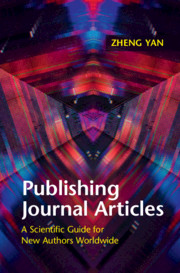Book contents
- Publishing Journal Articles
- Publishing Journal Articles
- Copyright page
- Dedication
- Contents
- Figures
- Preface
- Part I Nature of Journal Article Publication
- Part II Elements of Journal Article Publication
- Chapter 3 What Makes Our Manuscripts Publishable?
- Chapter 4 Who Are the Authors of Journal Articles?
- Chapter 5 Who Are the Readers of Your Articles?
- Part III Strategies of Planning Journal Articles
- Part IV Strategies of Writing Journal Articles
- Part V Strategies of Publishing Journal Articles
- Part VI Future of Journal Article Publication
- Index
Chapter 5 - Who Are the Readers of Your Articles?
from Part II - Elements of Journal Article Publication
Published online by Cambridge University Press: 27 October 2020
- Publishing Journal Articles
- Publishing Journal Articles
- Copyright page
- Dedication
- Contents
- Figures
- Preface
- Part I Nature of Journal Article Publication
- Part II Elements of Journal Article Publication
- Chapter 3 What Makes Our Manuscripts Publishable?
- Chapter 4 Who Are the Authors of Journal Articles?
- Chapter 5 Who Are the Readers of Your Articles?
- Part III Strategies of Planning Journal Articles
- Part IV Strategies of Writing Journal Articles
- Part V Strategies of Publishing Journal Articles
- Part VI Future of Journal Article Publication
- Index
Summary
Ordinary people’s intuitive thinking about readers of journal articles typically focuses on the scientific community. The four real-life cases, Seth, Tim, and Chris, Singer and Willett, suggest that readers are important, diverse, complex, and broad. Among various types of readers, peer reviewers and science journalists are two special and critical groups of readers. To publish our manuscripts successfully, four practical suggestions are offered: understanding readers and always have our readers in mind before or after we prepare our manuscripts; understandingreviewers and always have peer reviewers in mind before we write a manuscript; and understanding journalists and always have scientific reporters in mind after we publish a journal article.
Keywords
- Type
- Chapter
- Information
- Publishing Journal ArticlesA Scientific Guide for New Authors Worldwide, pp. 48 - 56Publisher: Cambridge University PressPrint publication year: 2020

